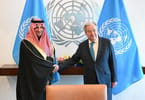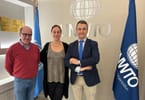ITALY – The Holy See (Vatican) will participate this year for the second time at the Biennale d’Arte di Venezia (Biennial Art Exhibition of Venice), with a Pavilion inspired by the New Testament. This is sure to be a well-attended event by local citizens as well as tourists.
“In the Beginning… the Word became flesh” is the theme that was chosen by the Commissioner Cardinal Gianfranco Ravasi, President of the Pontifical Council for Culture, at whose request the theme of the “Beginning” has been developed, passing from the 2013 edition’s reference to Genesis to that of the Prologue of the Gospel of John.
The criteria of sobriety and economy have guided the project and installation of the Pavilion, realized by architect Roberto Pulitani, and the costs are entirely sustained by sponsors who have made this important project possible. The official inauguration of the Pavilion takes place in the presence of His Eminence Cardinal Gianfranco Ravasi on Friday, May 8, at 4:30 pm.
Curated by Micol Forti, the structure of the Pavilion is articulated around two essential poles: firstly, the transcendent Word, which is “in the beginning” and which reveals the dialogical and communicative nature of the God of Jesus Christ (v. 1-5); and then the Word made “flesh,” (body) bringing the presence of God in humanity, especially where it appears injured and suffering (v. 14). The encounter of these “vertical-transcendent” and “horizontal-immanent” dimensions is the heart of the research.
The two “tables” of the Prologue of John’s Gospel are the basic inspiration for the artistic creations of three artists, who have been chosen after a long selection, in light of some precise criteria: the consonance of their own journeys with the chosen theme; the variety of the techniques used; their internationality, diversity and geographic and cultural provenance; and above all, the open and evolutionary nature of their work.
Monika Bravo (1964) was born and raised in Colombia, and today lives and works in New York; the Macedonian Elpida Hadzi-Vasileva (1971), currently lives and works in London; and the photographer Mário Macilau (1984), was born and raised in Maputo, Mozambique, where he lives.
The catalogue of the Pavilion, edited by Micol Forti and Elisabetta Cristallini, (Italian-English – Gangemi Editore), together with an introductory essay by Gianfranco Ravasi focusing on the theme of the Pavilion, contains texts by Micol Forti, Elisabetta Cristallini, Ben Quash, Octavio Zaya, and Alessandra Mauro.
A specific App will be provided inside the Pavilion for more information to the public, which has already been activated, along with a Twitter account for further dialogue: @PadVat Biennale. The exhibition runs from May 9-November 22, 2015.
WHAT TO TAKE AWAY FROM THIS ARTICLE:
- “In the Beginning… the Word became flesh” is the theme that was chosen by the Commissioner Cardinal Gianfranco Ravasi, President of the Pontifical Council for Culture, at whose request the theme of the “Beginning” has been developed, passing from the 2013 edition's reference to Genesis to that of the Prologue of the Gospel of John.
- The two “tables” of the Prologue of John's Gospel are the basic inspiration for the artistic creations of three artists, who have been chosen after a long selection, in light of some precise criteria.
- The catalogue of the Pavilion, edited by Micol Forti and Elisabetta Cristallini, (Italian-English – Gangemi Editore), together with an introductory essay by Gianfranco Ravasi focusing on the theme of the Pavilion, contains texts by Micol Forti, Elisabetta Cristallini, Ben Quash, Octavio Zaya, and Alessandra Mauro.






















